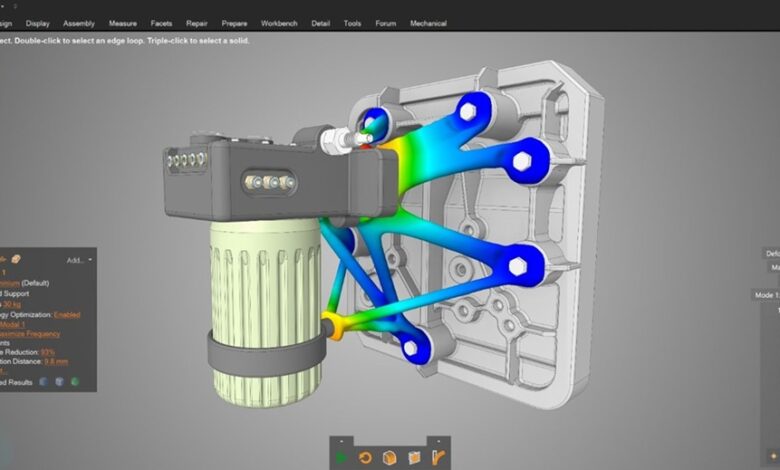Transforming Innovation: AI for Product Design and AI in Consumer Electronics

Artificial Intelligence (AI) has become a driving force behind innovation across various industries, notably in product design and consumer electronics. By leveraging advanced algorithms and data analytics, AI is revolutionizing how products are conceptualized, designed, and brought to market. This comprehensive guide explores how AI is reshaping product design and its impact on the consumer electronics industry, highlighting key applications, benefits, and future trends.
AI in Product Design: Revolutionizing Creativity and Efficiency
Product design is a multifaceted process involving creativity, functionality, and usability. AI introduces new paradigms in this domain, enhancing the design process from ideation to prototyping and beyond.
How AI Enhances Product Design
1. Generative Design
Generative design uses AI algorithms to explore a multitude of design possibilities based on predefined parameters and constraints. By analyzing various design options, generative design helps identify optimal solutions that might not be immediately apparent through traditional methods.
- Application: Autodesk’s generative design software leverages AI to create innovative structures and components, optimizing material usage and performance.
2. Predictive Analytics
AI-powered predictive analytics can forecast trends and consumer preferences, allowing designers to create products that align with future market demands. By analyzing historical data and current trends, AI helps in anticipating customer needs and preferences.
- Application: Companies like Nike use predictive analytics to design products that cater to emerging fashion trends and consumer behavior.
3. Enhanced Prototyping
AI for product design accelerates the prototyping phase by automating design iterations and simulations. AI-driven tools can rapidly generate and test prototypes, reducing the time and cost associated with physical prototyping.
- Application: Siemens utilizes AI to streamline the prototyping process, enabling faster and more efficient development of new products.
4. Design Personalization
AI enables the customization of products to meet individual customer preferences. By analyzing user data and feedback, AI systems can suggest design modifications that cater to specific needs and preferences.
- Application: Companies like Adidas use AI to offer personalized shoe designs based on customer preferences and past purchases.
Benefits of AI in Product Design
1. Increased Efficiency
AI automates repetitive design tasks and optimizes processes, leading to significant time and cost savings. Automation reduces manual efforts and accelerates the overall design cycle.
2. Enhanced Creativity
Generative design and AI-driven simulations expand the creative possibilities for designers. AI provides new insights and design options that push the boundaries of traditional design approaches.
3. Improved Accuracy
AI enhances the accuracy of design predictions and simulations, resulting in more reliable and effective product designs. Accurate data analysis reduces errors and improves design outcomes.
4. Faster Time-to-Market
AI speeds up the design and prototyping processes, enabling faster development and launch of new products. This agility allows companies to respond more quickly to market demands and opportunities.
Real-World Applications of AI in Product Design
1. Automotive Design
AI is used in automotive design to optimize vehicle performance, safety, and aesthetics. AI algorithms analyze crash test data, simulate driving conditions, and generate innovative design solutions.
- Example: Tesla uses AI for designing autonomous driving features and optimizing vehicle performance.
2. Fashion Design
In fashion, AI-driven tools assist designers in creating new collections by analyzing trends, predicting demand, and generating design ideas.
- Example: Stitch Fix uses AI to recommend fashion items and designs based on customer preferences and trends.
3. Consumer Products
AI aids in designing consumer products by analyzing user feedback, predicting trends, and optimizing functionality.
- Example: Philips utilizes AI to design consumer electronics such as smart lighting and healthcare devices.
AI in Consumer Electronics: Shaping the Future of Technology
Consumer electronics is a rapidly evolving field where AI is playing a pivotal role in enhancing product functionality, user experience, and market competitiveness.
How AI Transforms Consumer Electronics
1. Smart Devices
AI powers smart devices by enabling them to learn from user interactions and adapt to individual preferences. Smart home devices, wearables, and voice assistants utilize AI to provide personalized experiences and seamless integration.
- Application: Amazon Echo and Google Home use AI to understand and respond to voice commands, control smart home devices, and provide personalized recommendations.
2. Enhanced User Interfaces
AI in consumer electronics enhances user interfaces by enabling intuitive and adaptive interactions. Natural Language Processing (NLP) and computer vision allow devices to understand and respond to voice and visual commands.
- Application: Apple’s Siri and Google Assistant leverage AI to provide voice-controlled assistance and personalized recommendations.
3. Predictive Maintenance
AI predicts and prevents potential issues in consumer electronics by analyzing usage patterns and performance data. Predictive maintenance helps extend the lifespan of devices and reduce downtime.
- Application: LG’s AI-powered appliances use predictive maintenance to identify and address potential issues before they affect performance.
4. Personalized Recommendations
AI provides personalized recommendations based on user preferences and behavior. Recommendation algorithms analyze data to suggest relevant products, content, and services.
- Application: Netflix and Spotify use AI to recommend movies, shows, and music based on user preferences and viewing/listening history.
Benefits of AI in Consumer Electronics
1. Improved User Experience
AI enhances user experience by providing personalized, intuitive, and responsive interactions. Smart devices adapt to user preferences, making technology more accessible and enjoyable.
2. Increased Efficiency
AI optimizes device performance and functionality, leading to more efficient operation and reduced energy consumption. Predictive maintenance and automation contribute to overall efficiency.
3. Enhanced Functionality
AI expands the capabilities of consumer electronics by enabling advanced features such as voice control, image recognition, and personalized recommendations. These features enhance device functionality and user satisfaction.
4. Market Competitiveness
AI-driven innovations provide a competitive edge in the consumer electronics market. Companies that leverage AI can differentiate their products, attract customers, and stay ahead of industry trends.
Real-World Applications of AI in Consumer Electronics
1. Smart Home Technology
AI enhances smart home technology by enabling devices to learn from user behavior and automate home management tasks.
- Example: Nest thermostats use AI to learn user preferences and optimize heating and cooling schedules.
2. Wearable Technology
Wearable devices use AI to monitor health metrics, provide personalized fitness recommendations, and track performance.
- Example: Fitbit and Apple Watch use AI to analyze health data and offer insights into physical activity and wellness.
3. Entertainment Systems
AI enhances entertainment systems by providing personalized content recommendations, voice control, and smart features.
- Example: Roku and Amazon Fire TV use AI to recommend movies and shows based on viewing history and preferences.
Integrating AI for Product Design and Consumer Electronics
1. Collaborative Development
Integrating AI for product design and consumer electronics involves collaboration between designers, engineers, and data scientists. Cross-functional teams work together to leverage AI technologies and create innovative products.
2. Data-Driven Insights
AI provides valuable data-driven insights that inform design decisions and product development. Analyzing user data, market trends, and performance metrics helps optimize product design and functionality.
3. Continuous Improvement
AI systems should be continuously updated and refined based on new data and feedback. Ongoing improvement ensures that AI technologies remain effective and relevant in evolving markets.
4. Scalability
AI solutions for product design and consumer electronics should be scalable to accommodate growing needs and evolving technologies. Scalable tools and platforms enable businesses to adapt and expand their operations.
Challenges and Considerations
1. Data Privacy and Security
AI applications rely on large volumes of data, raising concerns about data privacy and security. Businesses must ensure that AI systems comply with regulations and protect sensitive information.
2. Integration with Existing Systems
Integrating AI with existing design and electronics systems can be challenging. Organizations need to address compatibility issues and ensure seamless integration to maximize the benefits of AI technologies.
3. Bias and Fairness
AI models can introduce biases based on the data they are trained on. It is essential to monitor and address potential biases to ensure fair and unbiased outcomes in product design and consumer electronics.
4. Cost and Resource Investment
Implementing AI technologies requires significant investment in technology, infrastructure, and talent. Businesses must evaluate the costs and resources associated with AI adoption and ensure that the benefits justify the investments.
The Future of AI in Product Design and Consumer Electronics
1. Advanced AI Algorithms
Future advancements in AI algorithms will enhance the capabilities of product design and consumer electronics tools. More sophisticated algorithms will improve accuracy, creativity, and functionality.
2. Increased Automation
AI will drive further automation in product design and consumer electronics, handling increasingly complex tasks and optimizing processes. Automation will increase efficiency and reduce manual efforts.
3. Enhanced Personalization
AI will enable even greater personalization in product design and consumer electronics. Enhanced personalization will improve user experiences and drive better outcomes.
4. Seamless Integration
Future AI solutions will offer improved integration with existing systems and data sources, providing a more comprehensive view of design and user interactions. Enhanced integration will enable more effective strategies and better results.
Conclusion
AI is revolutionizing product design and consumer electronics by providing innovative solutions that enhance creativity, efficiency, and functionality. AI-powered tools and technologies offer valuable insights, automate processes, and drive innovation, shaping the future of these industries.
By embracing AI and addressing associated challenges, businesses can unlock new opportunities, optimize their operations, and deliver exceptional products and experiences. The future of AI in product design and consumer electronics is bright, with endless possibilities for enhancing innovation and achieving sustained success.



